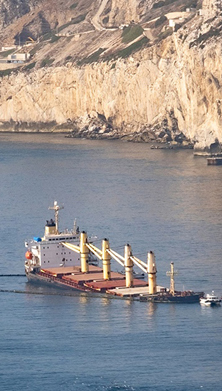This article is part of the
Global claims review 2022
Industry-wide insured losses from the war in Ukraine are currently difficult to estimate, although the conflict has the potential to become one of the largest man-made catastrophe losses in modern times. Property Claims Services (PCS) has predicted that aggregate industry insured losses from the war could exceed $20bn [1], while ratings agency Standard & Poor’s predicted losses of around $35bn. [2]
From an AGCS perspective, as of the beginning of May 2022, currently around a dozen claims have been notified. “But this is only a snapshot as the war is still ongoing,” explains AGCS Chief Claims Officer and board member, Thomas Sepp. “However, we do not expect a major wave of claims like those caused by the Covid pandemic. As tragic as the events in Ukraine are, with so many human lives and property assets being senselessly destroyed, our exposure as a corporate insurance carrier is limited.”
Aviation and political risk to drive industry losses
The largest exposure related to the conflict is likely to come from aviation insurance lines, in particular special war covers for aircraft leasing companies such as ‘lessor contingent all risk’ or ‘contingent war’. Around 400 of the 500 [3] commercial aircraft (valued at around $10bn) leased by Russian airlines before the war remained in Russia at the beginning of May 2022. Air Lease Corp [4] said in April it would write off leased aircraft trapped in Russia valued at $802mn, and that it would seek to recover losses from its insurers.
Notifications have been made to the insurance market by aircraft leasing companies, although this unprecedented situation is complex in terms of policy and legal interpretation and could take many years to resolve. AGCS does not have exposure as it withdrew from this niche segment some years ago. Potential claims will mainly affect Lloyd’s insurers and the global reinsurance market. The insurance market is also likely to pay sizable claims for political risk/political violence policies, as well as for marine and cargo insurance due to the impact on merchant shipping.
Future claims scenarios for D&O, cyber and CBI
The conflict could also result in claims for other lines of business, such as directors and officers (D&O) insurance. Companies that have writtenoff Russian assets could potentially face claims from investors at a later date, while the knockon effects of the conflict create a heightened risk environment, such as through sanctions, disclosure and financial market volatility.
The cyber insurance market, which is already experiencing elevated activity in recent years, could also see an uptick in claims should the war spill over into the cyber space, although this threat has yet to materialize.
The situation in Ukraine also gives rise to potential scenarios for contingent business interruption claims, although such losses are typically only covered when caused by insured property damage, such as from a fire or a flood. Many corporations around the world have production hubs or suppliers in Ukraine or are reliant on raw materials from Russia and Ukraine. Several automotive manufacturers temporarily halted production after car-part manufacturers in Ukraine shut down at the start of the war, while food manufacturers are having to substitute sunflower oil from Ukraine (the world’s biggest exporter of sunflower oil) for other ingredients.
Indirectly, the war in Ukraine has caused a spike in energy prices, which has further driven up inflation, which could in turn lead to higher repair and rebuilding costs for property claims, as well as higher business interruption losses. For example, high oil prices can drive higher business interruption claims in the energy sector.
Losses to fall on reinsurers and specialty markets
Indirectly, the war in Ukraine has caused a spike in energy prices, which has further driven up inflation
With total losses estimated at between $10bn and $35bn, the conflict would be a manageable event for the insurance industry, although it would be material for the sectors most affected.
PCS estimates that potential aviation losses are currently estimated at around $7bn to $10bn, which would make it the largest aviation insured loss event in history. Marine losses are said to be around $5bn while energy claims are thought to be around $2bn, with wind farms alone likely sustaining as much as $850mn in losses.
“Current expected insured losses from the war in Ukraine are comparable with a mid‑sized natural catastrophe, but for specialist markets like aviation, losses could become large indeed. However, overall, this is a manageable loss for the insurance industry, and one that is likely to fall to the reinsurance market, rather than impacting direct insurers,” says Philipp Cremer, Global Head of Claims Performance & Liaison at AGCS.
War exclusions to limit exposures
Claims will be complex and uncertain
Managing claims related to the war is challenging, given the situation on the ground in Ukraine and the complex nature of claims. Loss adjusters are unable to make site visits in Ukraine, although AGCS is using publicly available satellite imagery and remote claims assessment tools to assess claims. Each claim is assessed on an individual basis and resolution is subject to policy wordings, including exclusions for war and sanctions. AGCS, which handles some 140,000 claims each year, has a number of claims related to Russian individuals and businesses where payments are currently prohibited under international sanctions.
The duration and outcome of the conflict is also a key factor shaping insured losses. Many policies with potential exposure remain on risk, and where claims are notified, losses may not yet have crystalized. Longer term, insurers could see further claims for property damage and business interruption, either directly related to the war or indirectly.
For example, over 100 ships [3] were trapped in Ukrainian ports as of May, many without crew. In addition to physical damage related to the conflict, trapped ships could suffer damage – from grounding, collision or a machinery breakdown – where a lack of maintenance or crew is a contributing factor. It is also conceivable that vessels trapped indefinitely could be declared a total loss, depending on coverage terms and conditions. “We can assume that the settlement of claims from a war that will last at least for many months, if not longer, will raise some new questions for the insurance industry,” Sepp concludes.
References
[1] Reinsurance News, Ukraine conflict industry loss could exceed $20bn: PCS, April 18, 2022
[2] Reuters, S&P Global says Russia‑Ukraine insurance losses could reach $35bn, March 31, 2022
[3] Reuters, Moscow says all foreign leased aircraft will remain in Russia, March 31, 2022
[4] US Securities and Exchange Commission Filing, April 19, 2022
[5] ISWAN, 500 seafarers remain trapped on vessels stuck in Ukrainian ports, 1,500 evacuated since March, May 6, 2022
Pictures: Adobe Stock
Newsletter
Keep up to date on all news and insights from AGCS
















